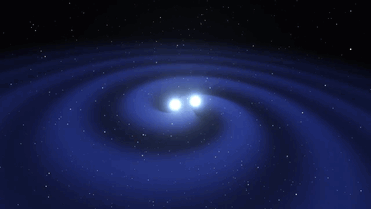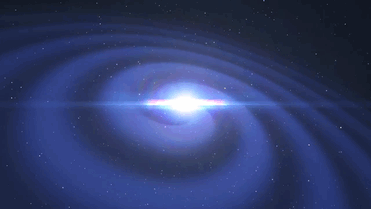Why Won’t Our Parker Solar Probe Melt?
Why Won’t Our Parker Solar Probe Melt?
This summer, our Parker Solar Probe will launch to travel closer to the Sun than any mission before it, right into the Sun’s outer atmosphere, the corona.

The environment in the corona is unimaginably hot: The spacecraft will travel through material with temperatures greater than 3 million degrees Fahrenheit.
So…why won’t it melt?
The Difference Between Heat and Temperature
Parker Solar Probe was designed from the ground up to keep its instruments safe and cool, but the nature of the corona itself also helps. The key lies in the difference between heat and temperature.
Temperature measures how fast particles are moving, while heat is the total amount of energy that they transfer. The corona is an incredibly thin and tenuous part of the Sun, and there are very few particles there to transfer energy – so while the particles are moving fast (high temperature), they don’t actually transfer much energy to the spacecraft (low heat).

It’s like the difference between putting your hand in a hot oven versus putting it in a pot of boiling water (don’t try this at home!). In the air of the oven, your hand doesn’t get nearly as hot as it would in the much denser water of the boiling pot.
So even though Parker Solar Probe travels through a region with temperatures of several million degrees, the surface of its heat shield will reach only about 2,500 F.

The Heat Shield
Of course, thousands of degrees Fahrenheit is still way too hot for scientific instruments. (For comparison, lava from volcano eruptions can be anywhere between 1,300 to 2,200 F.)
To withstand that heat, Parker Solar Probe is outfitted with a cutting-edge heat shield, called the Thermal Protection System. This heat shield is made of a carbon composite foam sandwiched between two carbon plates. The Sun-facing side is covered with a specially-developed white ceramic coating, applied as a plasma spray, to reflect as much heat as possible.

The heat shield is so good at its job that even though the Sun-facing side of the shield will be at 2,500 F, the instruments in its shadow will remain at a balmy 85 F.
Parker Solar Probe Keeps its Cool
Several other designs on the spacecraft help Parker Solar Probe beat the heat.
Parker Solar Probe is not only studying the Sun – it’s also powered by it. But even though most of the surface area of its solar arrays can be retracted behind the heat shield, even that small exposed segment would quickly make them overheat while at the Sun.

To keep things cool, Parker Solar Probe circulates a single gallon of water through its solar arrays. The water absorbs heat as it passes behind the arrays, then radiates that heat out into space as it flows into the spacecraft’s radiator.
It’s also important for Parker Solar Probe to be able to think on its feet, since it takes about eight minutes for information to travel between Earth and the Sun. If we had to control the spacecraft from Earth, by the time we knew something went wrong, it would be too late to fix it.
So Parker Solar Probe is smart: Along the edges of the heat shield’s shadow are seven sensors. If any of these sensors detect sunlight, they alert the central computer and the spacecraft can correct its position to keep the sensors – and the rest of the instruments – safely protected behind the heat shield.

Over the course of its seven-year mission, Parker Solar Probe will make 24 orbits of our star. On each close approach to the Sun, it will sample the solar wind, study the Sun’s corona, and provide unprecedentedly close up observations from around our star – and armed with its slew of innovative technologies, we know it will keep its cool the whole time.
Parker Solar Probe launches summer 2018 on its mission to study the Sun. Keep up with the latest on the mission at nasa.gov/solarprobe or follow us on Twitter and Facebook.
Make sure to follow us on Tumblr for your regular dose of space: http://nasa.tumblr.com
More Posts from Sharkspaceengine and Others





Pictures of the Day 2 - December 30, 2018
Here we come across an Earth-like world with violet hued skies. This planet supports marine life and orbits a star within a globular cluster. There are 137 star systems just within 5 light years of this planet, and the planet’s sky is lit up with their light. Most of the stars are close enough to be visible during the day. Additionally, this planet is located within a quandary star system consisting of an K type orange dwarf orbited three smaller red dwarfs in a wide complex orbit.
While Earth-Like, there are notable differences from Earth. First, the planet has almost no obliquity meaning it has no axial tilt and therefore does not experience seasons. Massive ice caps cover both poles. The planet also spins very slowly with a solar day lasting almost 3.86 Earth days. Only 4 small asteroid moons orbit the planet. Additionally, life is limited to the oceans, and the atmosphere is almost entirely made up of carbon dioxide.
Space Engine System ID: RSC 5581-4-4-2706-51 A4 to visit the system in Space Engine.
Planet Stats Below:
Radius: 5,268.61 km (0.83 x Earth) Mass: 0.59 Earth Masses Orbital Distance: 0.43 AU Length of Year: 118.88 Days Length of Solar Day: 3.86 Days Gravity: 0.86 g Average Temperature: 277 K (39° F) Atmospheric Pressure: 0.52 Atmospheres Atmospheric Composition: 92.7% Carbon Dioxide, 4.23% Nitrogen, 3.02% Oxygen, 0.05% Sulfur Dioxide.







O’Srius System - Post 3 (Stunning World)
Here we come across the smaller component of a double planetary system, being the 9 and 10th planets from the star. This planet is by far the most visually stunning world I have come across in the 6 months of playing space engine.
The world is roughly the same size as Earth, but only 0.58 times the mass. The surface is covered in liquid nitrogen oceans and nitrogen ice-caps. The planet has a surface temperature of 68 K or -337 °F. The atmosphere is composed of nitrogen and argon with a surface pressure of 0.095 atmospheres. The surface has a nitrogen cycle, much the same as Earth has a water cycle.
High Resolution Pics
Picture 1 - Crescent
Picture 2 - Gibbous
Picture 3 -
Picture 4 - River Channels
Picture 5 - Varied terrain
Picture 6 - Polar Cap
Picture 7 - Nitrogen Shoreline


Pictures of the Day - February 12, 2019 (Late Post)
Stormy atmosphere of a gas giant. The planet orbits a binary pair of stars consisting of a white F-Type star and a bright blue B-type star



Pictures of the day 2 - December 9, 2018
Insight B System - Moons of the sixth planet
Here we have a few views of the system’s sixth planet viewed from the surfaces of the three inner-most moons.
High Resolution Pictures
View from the inner-most moon
View from the second moon
View from the third moon

Picture of the day - January 3, 2019
Desert-like moon orbiting a large gas giant. This is the same world as the skylines from the previous post.

Like the gaping mouth of a gigantic celestial creature, the cometary globule CG4 glows menacingly in this image from ESO’s Very Large Telescope. Although it looks huge and bright in this image it is actually a faint nebula and not easy to observe. The exact nature of CG4 remains a mystery.
Credit: ESO

Picture of the day 2 - December 1, 2018.
Saturn-Like gas giant and two moons.
Pillowfort reopens new user registrations at 10 am est
Pillowfort has finally reopened new user registrations which will begin at 10 am eastern. There is a small $5 fee until the site is no longer in beta. I have permanently switched all my posts over there. I’ll be posting a follow up post with my blog link later today
What would cause two stars to collide? What does it take for a whole planet (as massive as Jupiter) to change trajectory?
The main mechanism that would make two stars collide is gravity. This depends on several factors, some stars may wander through space and end up being attracted by the gravitational field of another star, from there, one star begins to orbit the other.

But the most common are collisions in clusters of stars, because in a star cluster the stars are very close together, especially in globular clusters.

Collisions of young stars may also occur, as most of the stars are born close to each other in clusters. Many stars are binary, formed together, but in some cases before they evolve they may end up colliding.

In the universe both collisions of active stars can occur, as can collisions of white dwarfs, neutron stars and black holes.


The orbits of the planets are determined by the gravitational pull of the Sun, so it would need some very extreme force to cause the orbit of a planet to change its trajectory, perhaps if some planet or star enters our solar system, or when the Sun goes through changes and become a white dwarf in about 5 billion years.
-
 lireb-librarian liked this · 1 year ago
lireb-librarian liked this · 1 year ago -
 ranaspkillnarieth liked this · 2 years ago
ranaspkillnarieth liked this · 2 years ago -
 franquikoy liked this · 3 years ago
franquikoy liked this · 3 years ago -
 diamondblade1 liked this · 3 years ago
diamondblade1 liked this · 3 years ago -
 is-siawo liked this · 3 years ago
is-siawo liked this · 3 years ago
My Space Engine Adventures, also any space related topic or news. www.spaceengine.org to download space engine. The game is free by the way. Please feel free to ask me anything, provide suggestions on systems to visit or post any space related topic.Check out my other blog https://bunsandsharks.tumblr.com for rabbit and shark blog.
294 posts
